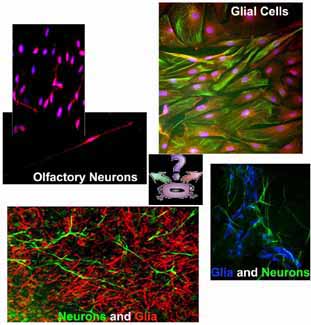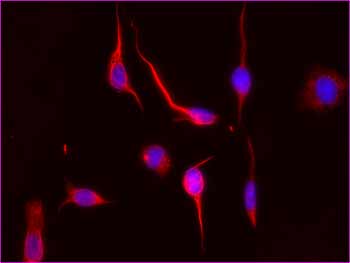The olfactory
epithelium (OE) is the oldest recognized source of potential
neural stem cells in the adult vertebrate. what can we learn
from this, to drive neural stem cells in deeper parts of the
brain? As olfactory neurons die, they direct local progenitors
(globose or horizontal basal cells) to guide their own replacement.
Why does this not happen as effectively in the human brain?
TOur previous findings have lead us to look in the CNS to
test how brain progenitors are regulated after iunjury and
in neurodegenerative disease (Alzheimer's). These projects
are being lead by Anthony Berndt, Athena Chou, Kathryn Westendorf
and Laila Abassi.

Adherent basal cell progenitors can generate many
different OE phenotypes in vitro
Funding: CIHR
(Canada) and The
Stem Cell Network |

We (Anthony Berndt and Sam Lloyd-Burton) are looking at a
matricellular protein, SPARC (Secreted Protein, Acidic, Rich
in Cysteines), and testing if it is a key regulator of the
neural stem cell activation environment. We (Christie McShane
and Kathryn Westendorf) are also testing if BLBP (FABP7),
a key protein in embryonic neural stem cells and radial glia,
is involved in the regulation of neural stem cell or primitive
glial state, in the adult brain. To date, we have identified
several classes of olfactory progenitors in vitro, including
a multipotent neuroglial progenitor.

Differentiating OP 6 cells - embryonically-derived
lines that model ORN development |

